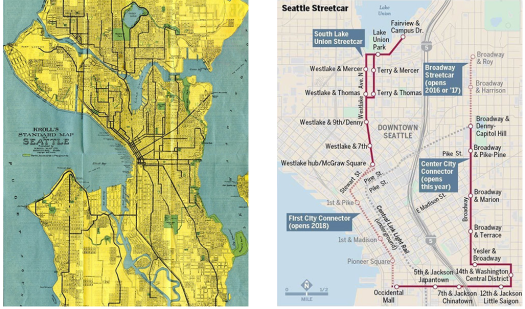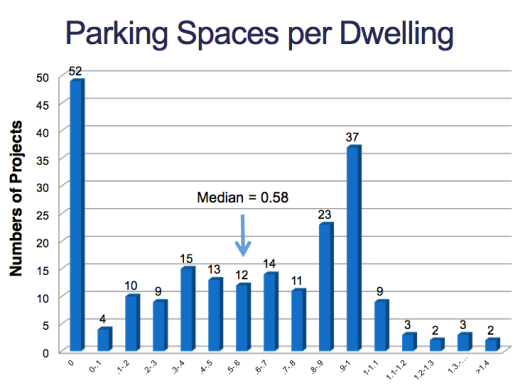 City Council member Nick Licata, who’s retiring after his term ends at the end of this year, would like his legacy to include amending Move Seattle, Mayor Ed Murray’s proposed $930 million transportation levy, to be smaller and less dependent on regressive property taxes.
City Council member Nick Licata, who’s retiring after his term ends at the end of this year, would like his legacy to include amending Move Seattle, Mayor Ed Murray’s proposed $930 million transportation levy, to be smaller and less dependent on regressive property taxes.
Arguing that voters are approaching tax fatigue and that his alternative is more progressive than the mayor’s proposed property-tax levy, Licata has introduced amendments that would reduce the overall package by $100 million and cut the levy itself to $600 million, with the $230 million difference paid for through the commercial parking tax (which would increase from 12.5 to 17.5 percent) and an annual employee hours tax, paid by businesses, of $18 per employee.
He also proposed an amendment explicitly barring SDOT from spending any Move Seattle Money on streetcars, and another requiring the department to file annual reports showing how they’d spent levy dollars each year.
The cuts and substitutions, Licata said during a briefing on Move Seattle last Tuesday, would reduce the size of the average homeowner’s annual property tax bill to $179 in the first year, compared to the Murray option’s $275. It would also reshuffle the tax burden to employers in a way that appeals to the economic-lefty crowd (the bigger the company, the more it would pay), and to drivers in a way that appeals to the transportation-lefty crowd (drivers would pay more to maintain the roads they use).
Dig about an inch under the surface, however, and the Licata amendments are far less progressive—in both the economic and the political sense—than they appear.
Let’s start with that streetcar amendment. It reads, in its entirety, “None of the Levy Proceeds may be used to build or operate streetcars.” In other words (as an increasingly agitated SDOT director Scott Kubly pointed out last week), no matter how circumstances may change, or how priorities may evolve, or how much outside funding may become available, not a dime of the Move Seattle money could be used on streetcars for the nine-year duration of the levy.
This is no small prohibition. Currently, Kubly noted, the city is finishing up the First Hill streetcar and may want to extend its northern terminus to Aloha in the future. Under the Licata amendment, the city would have no “flexibility to use the funds [for] the streetcar to have better access to light rail.” With per-mile ridership projected at about double what Link light rail is currently carrying, Kubly said, “This is a real transportation option. It’s not a toy.”
 Licata, a frequent rail opponent during his 18 years on the council, noted that Move Seattle currently includes no explicit references to streetcar, making it only logical to make the prohibition official. “This simply memorializes what was seen as the intent from the mayor,” Licata said. After a test back-and-forth with Kubly about whether the streetcar was or was not inherently a boondoggle, Licata concluded with a pretty cheap shot—”This is new information, that the levy’s intent is to build and operate a streetcar”—to which Kubly responded tersely, “That’s a mischaracterization of what I said.”
Licata, a frequent rail opponent during his 18 years on the council, noted that Move Seattle currently includes no explicit references to streetcar, making it only logical to make the prohibition official. “This simply memorializes what was seen as the intent from the mayor,” Licata said. After a test back-and-forth with Kubly about whether the streetcar was or was not inherently a boondoggle, Licata concluded with a pretty cheap shot—”This is new information, that the levy’s intent is to build and operate a streetcar”—to which Kubly responded tersely, “That’s a mischaracterization of what I said.”
Although the Licata streetcar prohibition seems unlikely to pass, it did give Licata a chance to throw shade at rail investments, and on the mayor’s transit-oriented development agenda more broadly. Fixed rail is generally seen as more conducive to TOD (because a transit system that stays in place can be the foundation of a stable community in ways that buses can’t), but it’s also associated with gentrification and extra cost. Hence the tension.
In comparison, the parking and “head tax” should be no-brainers, right? Both are progressive—the former in the sense that it discourages driving by making it more expensive, the latter because big corporations pay more because they have more employees. Unfortunately, neither case is that clear-cut.
To start with the head tax: The trouble isn’t that employers pay it (Licata’s argument that it will “help shift the burden away from homeowners and renters” and onto big businesses is compelling). The problem is that in the service of making the tax more “user-friendly” and easier to implement (last time, businesses complained that the tax required too much paperwork), the Licata amendment eliminates the very provisions that made it progressive (in the environmental sense) in the first place—exemptions for employers who encouraged their workers to find another way to work besides driving alone. It was those exemptions that employers found onerous—as Licata noted, “80 percent of their complaints were about paperwork”—so Licata simply eliminated them. In the form Licata proposes, the tax would be easier for employers and give them no incentive to invest in alternatives to single-occupancy car commuting.

Although the commercial parking tax avoids this problem (there’s a direct nexus, or linkage if you will, between driving and paying to park your car), increasing the city’s already-controversial 12.5 percent parking tax by 40 percent is inherently regressive (in the economic sense). Because the tax is the same whether you’re driving a 1990s Honda or a late-model Jaguar, lower-income drivers will be hit hardest by the tax. Even if you believe, as I do, that it’s generally good policy to discourage driving and encourage alternatives, it’s undeniable that flat taxes, like the sales tax, hit poor people the hardest.
Moreover, a large increase in the parking tax for Move Seattle would tie up transportation funding capacity that could be used for other purposes in the future, such as in-city bus service. That’s one reason Transportation Choice Coalition program director Shefali Ranganathan said her group opposed using the tax to replace part of the proposed levy, because “there may be other uses” for the tax.
Finally, Licata’s proposal relies on the notion that voters are afflicted with “tax fatigue” and may balk at a $930 million but have no problem with a $600 million alternative. The consequences “if the public believes this is too large a bite of the apple,” Licata said, could be dire. First, the levy would have to wait at least two years, since the housing levy is up for renewal in 2016. In the meantime, SDOT would have to lay off a quarter of its staff and stop doing many of its core functions, Licata said. And that’s assuming another levy would pass in 2017. In other words, disaster.
Instead, Licata said last week, “Maybe the best approach is doing this [amended version] now to get the levy to pass at a smaller level. .. The goal here is to provide the best transportation package we can afford, and one that we are fairly certain the voters will vote for.”
The tax fatigue prediction will be familiar to anyone who reads the Seattle Times‘ editorial page–stretch the voters to their breaking point and eventually they’ll snap. With the exception of 2014’s county-wide Proposition 1, that alarmist prediction has never come true. In Seattle, there are approximately zero people who will vote against a $930 million package because of “tax fatigue” who will suddenly vote for it at $600 million. To the contrary, a smaller package does less for fewer parts of the city, meaning that fewer people will see value in voting for it.
Ultimately, a levy, or taxing package, will live or die based on whether voters think it’s worth the money, and whether it will help them get from Point A to Point B. Council members should scrutinize the details of the proposal, but squeezing it down to less than what we need and shrinking its impact on property owners out of fear that they’ll vote against it if they aren’t properly pandered to is a strategy for failure.






 If you still aren’t registered to vote, it’s not too late, but you’ll need to hustle–today is the last day to register to vote in the November 3 election.
If you still aren’t registered to vote, it’s not too late, but you’ll need to hustle–today is the last day to register to vote in the November 3 election.



 There’s less than five percent of our sidewalk needs that are met in Move Seattle. If that’s what we’re going to do for the next nine years, then it’s disappointing. We’ve got to find solutions that include pedestrian infrastructure. We need sidewalks in Broadview. We need sidewalks in Haller Lake. We need sidewalks in North Maple Leaf. We need sidewalks in Lake City. And we’re still a long way from that.
There’s less than five percent of our sidewalk needs that are met in Move Seattle. If that’s what we’re going to do for the next nine years, then it’s disappointing. We’ve got to find solutions that include pedestrian infrastructure. We need sidewalks in Broadview. We need sidewalks in Haller Lake. We need sidewalks in North Maple Leaf. We need sidewalks in Lake City. And we’re still a long way from that. Brianna Thomas
Brianna Thomas

 Licata, a frequent rail opponent during his 18 years on the council, noted that Move Seattle currently includes no explicit references to streetcar, making it only logical to make the prohibition official. “This simply memorializes what was seen as the intent from the mayor,” Licata said. After a test back-and-forth with Kubly about whether the streetcar was or was not inherently a boondoggle, Licata concluded with a pretty cheap shot—”This is new information, that the levy’s intent is to build and operate a streetcar”—to which Kubly responded tersely, “That’s a mischaracterization of what I said.”
Licata, a frequent rail opponent during his 18 years on the council, noted that Move Seattle currently includes no explicit references to streetcar, making it only logical to make the prohibition official. “This simply memorializes what was seen as the intent from the mayor,” Licata said. After a test back-and-forth with Kubly about whether the streetcar was or was not inherently a boondoggle, Licata concluded with a pretty cheap shot—”This is new information, that the levy’s intent is to build and operate a streetcar”—to which Kubly responded tersely, “That’s a mischaracterization of what I said.”






